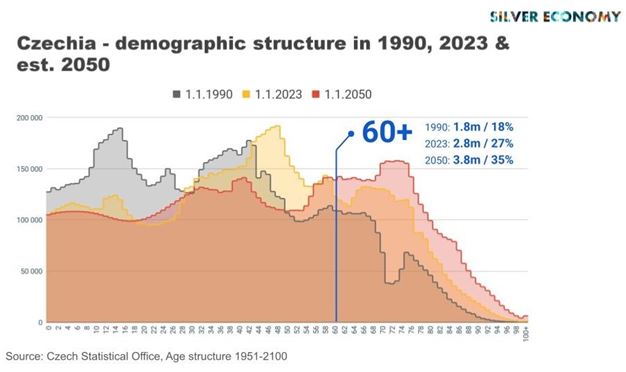"Motivated by Petr Majerik's insights, I've gathered and am sharing three surprises I've come across during my research on the Silver Economy, which includes my work on: Silver Generation Marketing: How to Effectively Communicate with People Aged 50+.
The term "Silver Generation" typically refers to individuals aged 60 and older, although there is no definitive age barrier. Some consider those aged 64 and above as elderly, while others suggest 50 as the threshold. Despite these varying definitions, there is a common thread connecting them all—a certain age threshold beyond which individuals become less significant to the market and marketers.
One: The Extent of Change
We are currently witnessing the most significant and swiftest demographic shift in human history. In 1990, the median age in Europe was 34 years, meaning that approximately 360 million Europeans were 34 or younger. Today, the median age in Europe is 42, marking an 8-year increase in just 33 years. This aging trend is also evident in the developed world at large. The median age in the United States has risen by 6 years to 38, which is slightly lower than in Europe. Japan, often considered the world's oldest country (excluding micro-countries), has a median age of 48.
For instance, take the case of Czechia, where the median age has risen to 43, an 8-year increase. In my country, Poland, the median age is 41. This global phenomenon of an aging society can be attributed to a combination of factors, including improvements in public health services, advancements in medicine, better hygiene, health education, mass vaccinations, improved living conditions, and relatively peaceful environments (notwithstanding recent conflicts). Additionally, declining fertility rates and smaller family sizes collectively contribute to the development of an aging, developed society."
Author: Wojciech Kowalczyk
TO BE CONTINUED...

